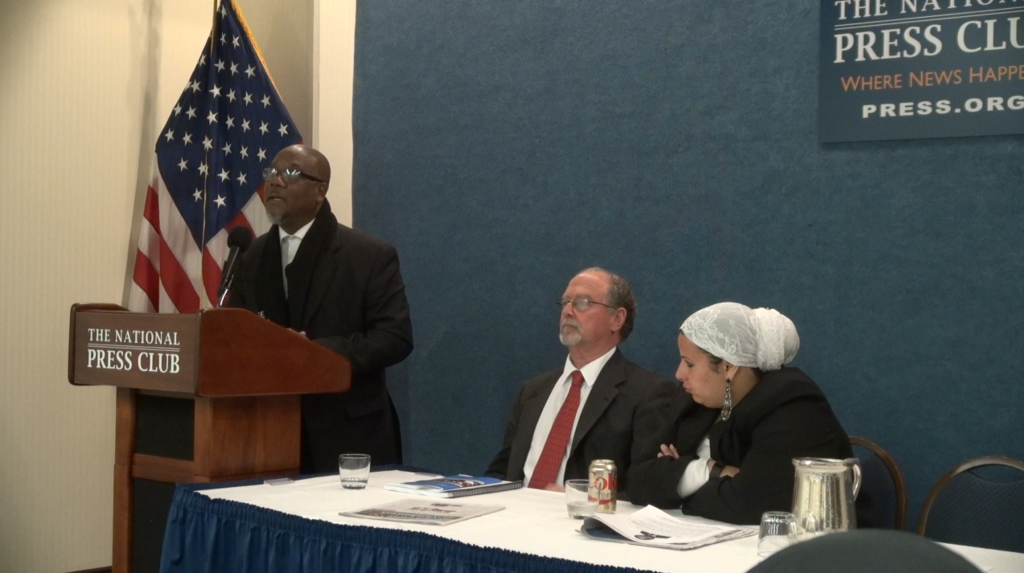WASHINGTON – For the first time since the Islamic State – also known as ISIS – began to spread across Iraq and Syria, neighboring Turkey has launched air strikes against positions of the jihadist organization in Syria.
Air Forces commanded from Ankara responded to the attacks launched by ISIS last month in the Turkish location of Suruç and the bordering city of Kilis. With this new development, the conflict takes on a new profile, perhaps one that many were expecting from a NATO ally, to slow down and undermine the progress and consolidation capabilities of the Islamic State.
For Ayça Alemdaroglu, Associate Director at the Keyman Modern Turkish Studies Program, this decision is related to Turkey’s domestic policy situation. “The governing party is making a clear effort to maintain its power in times of decreasing electoral support. A way to balance this is to look for support in the international community – especially the U.S. – and so, their current fight with the Kurds is not seen.”
If the Islamist militias were aiming at a military escalation, they are indeed succeeding. So far Turkey, which borders to the south with Syria and Iraq, had maintained a poorly defined defensive posture towards the advancement of ISIS. This, even though ISIS’ assault to Kobanî in October last year came dangerously close to the Turkish border.
Turkey, let’s not forget, has also been a haven for sympathizers of jihadism. Many of them are in the Kurdish southern provinces that have chosen to provide support to ISIS given the lack of prospects offered by the Turkish government for their cause.
Alemdaroglu, who has worked as a post-doctoral scholar at the Anthropology Department at Stanford and earned her doctorate in sociology at Cambridge, highlights the fact that several reports indicate that the Turkish government has been indirectly supporting ISIS. “Central intelligence agencies from Turkey have been transporting trucks across the boarder loaded with ammunitions, including anti-aircraft rockets that end up in the hands of Al-Qaeda,” she says.
Turkey is also the gateway to the territories controlled by ISIS for youths coming from all over Europe and the rest of the world to join the Islamist militia. And if that isn’t enough, there are more than a million and a half Syrian refugees living on Turkish soil.
Ankara had wanted to maintain its own agenda on the issue and on more than one occasion refused to provide facilities to the U.S. military. However, in this new stage, the Turkish government has yielded to Washington’s request to use the Incirlik Air Base and although the details of the agreement are unknown, it appears that the U.S. activity in the area will require greater Turkish cooperation.
The U.S. has made their conditions very known to Turkey in order for this cooperation to succeed. Among them is to fully respect the Kurds, who have become key allies to America in the area, and which they have armed to the teeth to avoid having a single boot on the ground.
So far Turkish Presidente Erdoğan has found it difficult to agree, mainly because he doesn’t like the Kurds to be armed by the U.S. and gaining international recognition for their work to eradicate extreme jihadism in the area.
This agreement and the new attitude of the Turkish government will mark a profound change in the management of the crisis by both Washington and Ankara. Before this, it was unacceptable that Turkey, a country that belongs to NATO, had turned a blind eye to the jihadist activity in its own territory.
Furthermore, it was strategically ineffective for the U.S. to combat ISIS militarily from bases and aircraft carriers located more than a thousand miles away.
This turning point, however, will not come without risks and the crisis could spill over to neighboring countries and even deepen the less known violence happening in Turkey right now.
“If you think about national security in a much broader sense, the security of human beings for example, what Turkey is doing right now is not strengthening national security at all. I just came back from Turkey on August 10 and there were two attacks in Istanbul. I think around 10 people died. This could be unrelated to the main ISIS issue but it shows that Turks are not safe at this moment,” says Alemdaroglu.

![Chris Voss is the founder and CEO of the Black Swan Group. “There are few people that have worked for the [U.S.] government that know as much about international kidnapping as I do,” he said. (Photo courtesy of the Black Swan Group)](../../../wp-content/uploads/2015/06/ChrisVoss-blueshirt-small.jpg)












